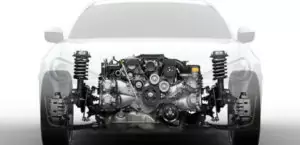The 3.0-liter Peugeot ES9J4 or XFZ engine was produced from 1996 to 2000 together with Renault and was installed on the largest and most powerful models of the French concern, such as 406 and 605. This engine, as a result of a slight modernization in 2000, received a new index ES9J4S.
Engines of the ES family: ES9J4, ES9J4S, ES9A.
The engine was installed on:
- Peugeot 406 I (D8/D9) in 1997 – 2000;
- Peugeot 605 I (Y30) in 1996 – 1999;
- Citroen Xantia I (X1/X2) in 1997 – 2000;
- Citroen XM I (Y3/Y4) in 1997 – 2000.
Specifications
| Production years | 1996-2000 |
| Displacement, cc | 2946 |
| Fuel system | injector |
| Power output, hp | 194 |
| Torque output, Nm | 267 |
| Cylinder block | aluminum V6 |
| Block head | aluminum 24v |
| Cylinder bore, mm | 87 |
| Piston stroke, mm | 82.6 |
| Compression ratio | 10.5 |
| Features | no |
| Hydraulic lifters | yes |
| Timing drive | belt |
| Phase regulator | no |
| Turbocharging | no |
| Recommended engine oil | 5W-40 |
| Engine oil capacity, liter | 4.75 |
| Fuel type | petrol |
| Euro standards | EURO 2/3 |
| Fuel consumption, L/100 km (for Peugeot 605 1999) — city — highway — combined |
15.9 8.0 10.9 |
| Engine lifespan, km | ~300 000 |
| Weight, kg | 190 |
Disadvantages of the ES9J4 engine
- Most problems for the owner are caused by a variety of electrical glitches.
- Even slight overheating causes leaks from numerous gaskets and seals.
- Timing belt replacement is very expensive, and driving to the last is fraught with overhaul.
- Poor-quality gasoline quickly disables candles and coils after them.
- Lambda probes can’t handle bad fuel, and replacing all four of them isn’t cheap.






